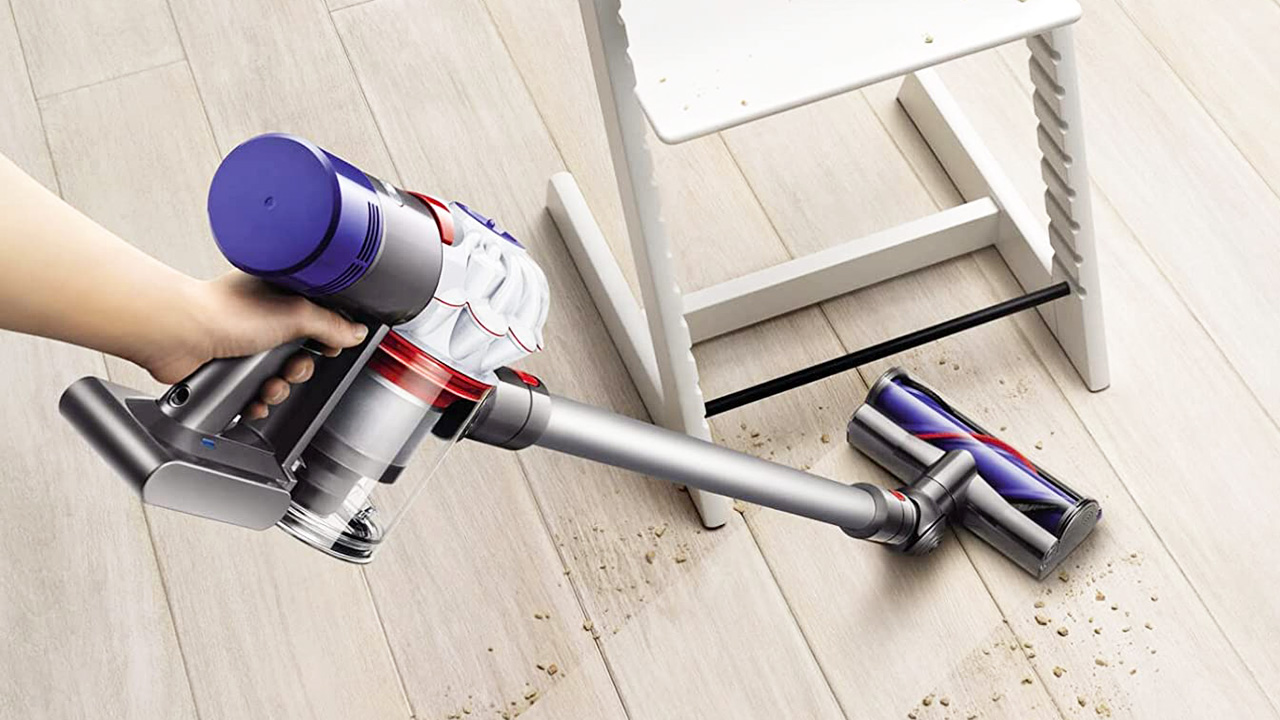
Cleaning the house isn’t a chore I look forward to, but the experience was made more bearable recently after upgrading to a cordless vacuum for the first time. My ageing upright vacuum is almost on life support at this point and I recently got the opportunity to review the Dyson V11 Advanced. To say the sleek and capable Dyson sparked a new love of vacuuming the kitchen would be a total lie. But, it did give me pause to wonder why I hadn’t switched over much sooner.
The Shark Clean & Empty Cordless Vacuum currently holds the “best cordless” spot in our best vacuum cleaners guide, but I was still pleasantly surprised with the Dyson. Before we go any further, I need to point out that to non-vacuuming folks like me, the terminology can get a little confusing. Cordless is pretty simple to understand; you don’t need to plug it into an outlet. But within that category you’ve got upright, stick, handheld, canister and wet and dry. In my case, I moved from a corded (and heavy) upright vacuum to a cordless stick vacuum. And what I sacrificed in capacity, I more than made up for in ease-of-use and portability.
Stick vacuums tend to be designed for smaller homes or apartments. They’ve got a smaller bin, which means more trips to the trash for emptying. And since you now have a battery to worry about, there’s a time limit on your cleaning (some may say that’s not a bad thing). Now that I’ve cut the cord, so to speak, I’m not sure I’ll ever go back to a regular vacuum.
3 things I liked
It's much lighter
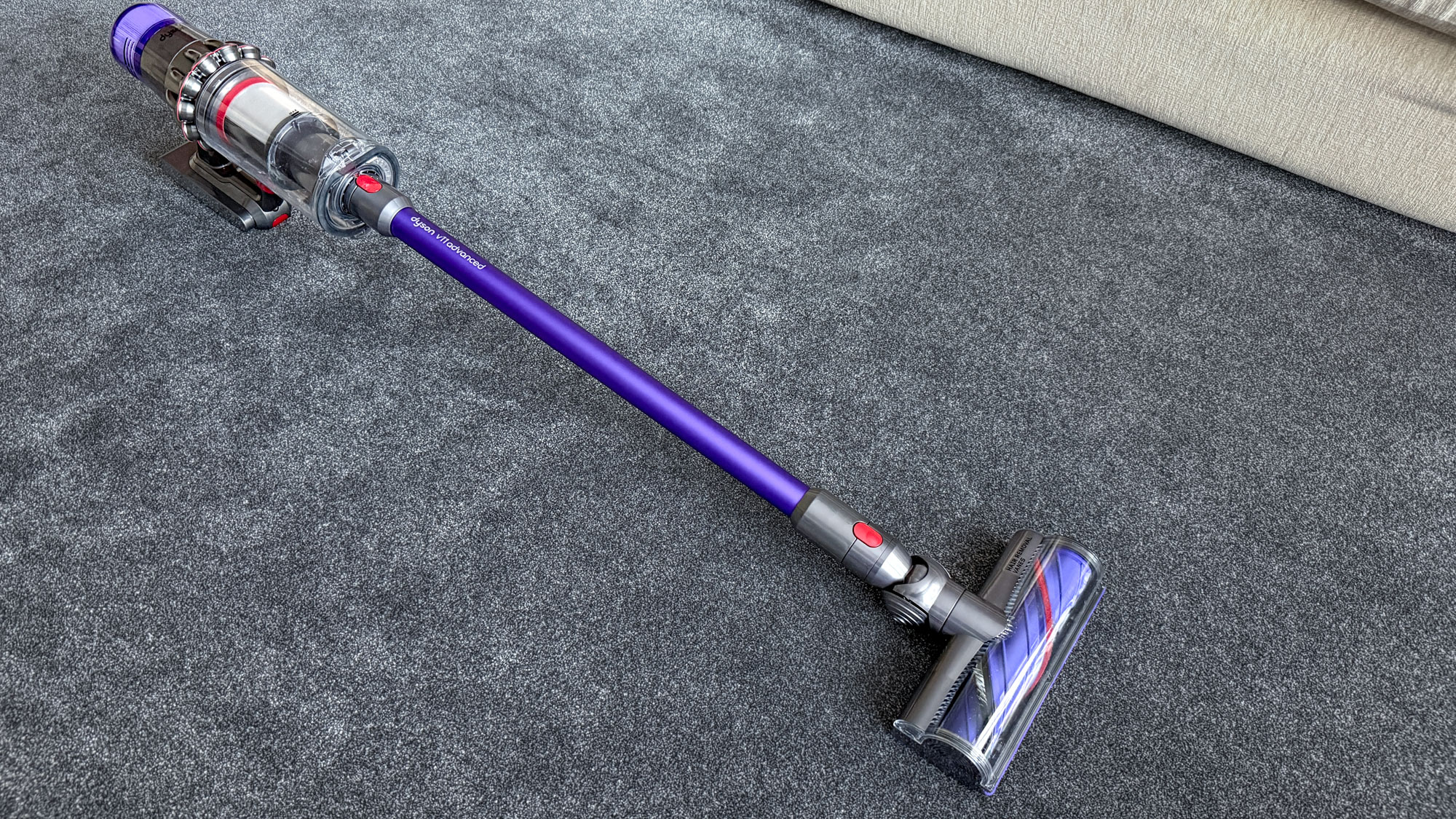
The first and most obvious benefit you’ll see in swapping to a cordless stick like the Dyson V11 (or any of its multiple variants) is the reduction in weight. A corded upright vacuum can weigh anything up to 19 pounds, so trading that in for a 6.6-pound machine is easier on the muscles over the course of a cleaning session if you’re covering a lot of ground or going up and down stairs. The flip side of that coin is you have to bear the weight of the cordless vacuum at all times, rather than letting the body of the wheeled corded vacuum take the brunt.
No swapping sockets
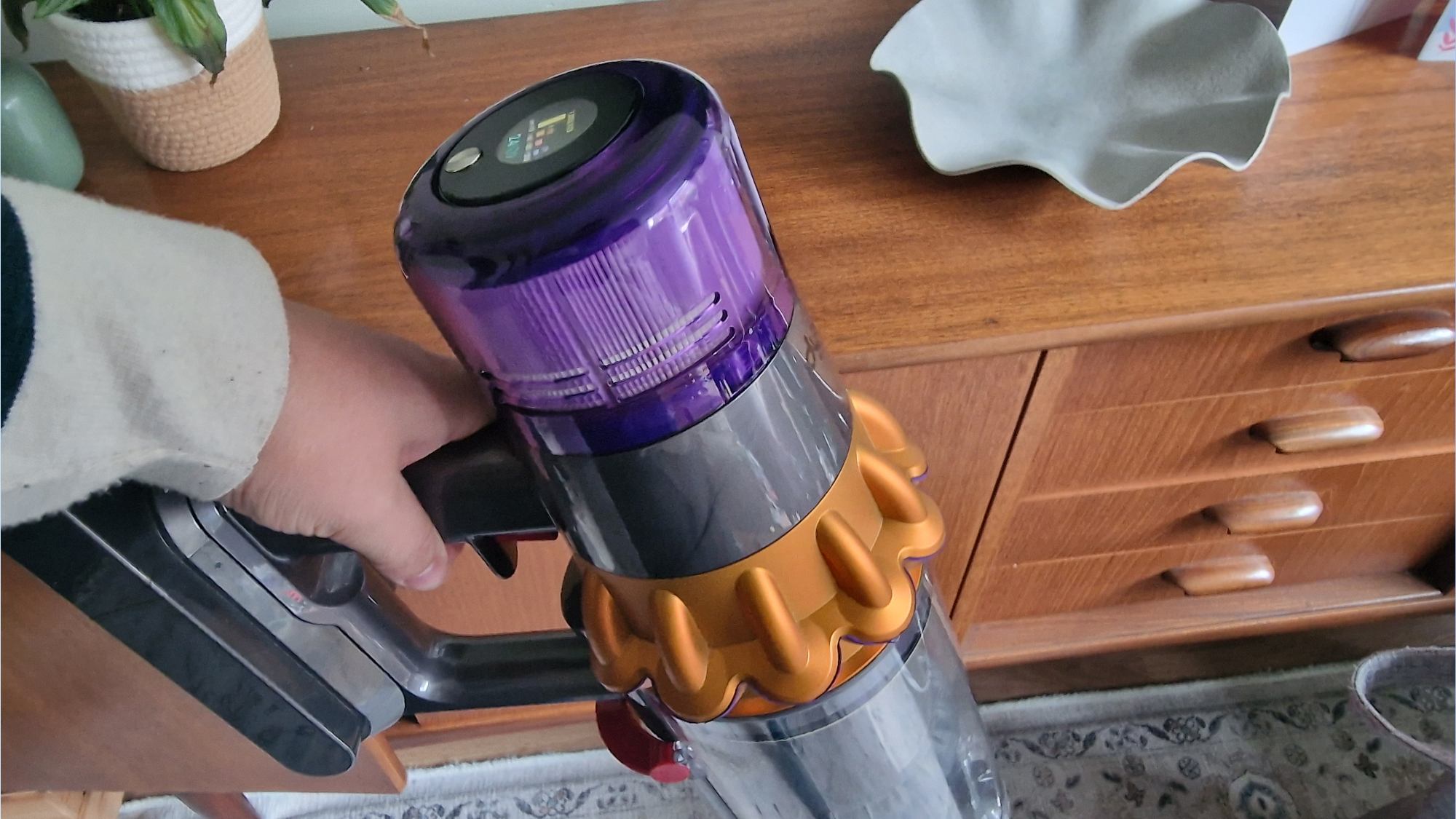
The obvious advantage of a battery-powered cordless vacuum is...no wires! Having to swap sockets around my house to keep my upright vacuum running in different rooms is a reality I never have to inhabit again. This is less of a problem if you live in a single floor apartment but anyone living in a house with one (or even two) flights of stairs to navigate will cumulatively be saving a lot of time each week by ditching the power cable.
The Dyson V11 boasts a 60-minute battery life which is about standard for an affordable cordless vacuum. The aforementioned Shark only bests it by 10 minutes and while you’re never going to run out of power while connected to the mains, I always found I was finished with time to spare on the battery. If you do happen to live in a palace and need more power for longer cleaning spells, you can always pick up a spare battery from the likes of Amazon or Walmart and hot swap as needed. The Dyson V11 takes around four-and-a-half hours to charge from empty to full — so I’ve made it a habit to keep it plugged in whenever not in use.
A multi-purpose handheld
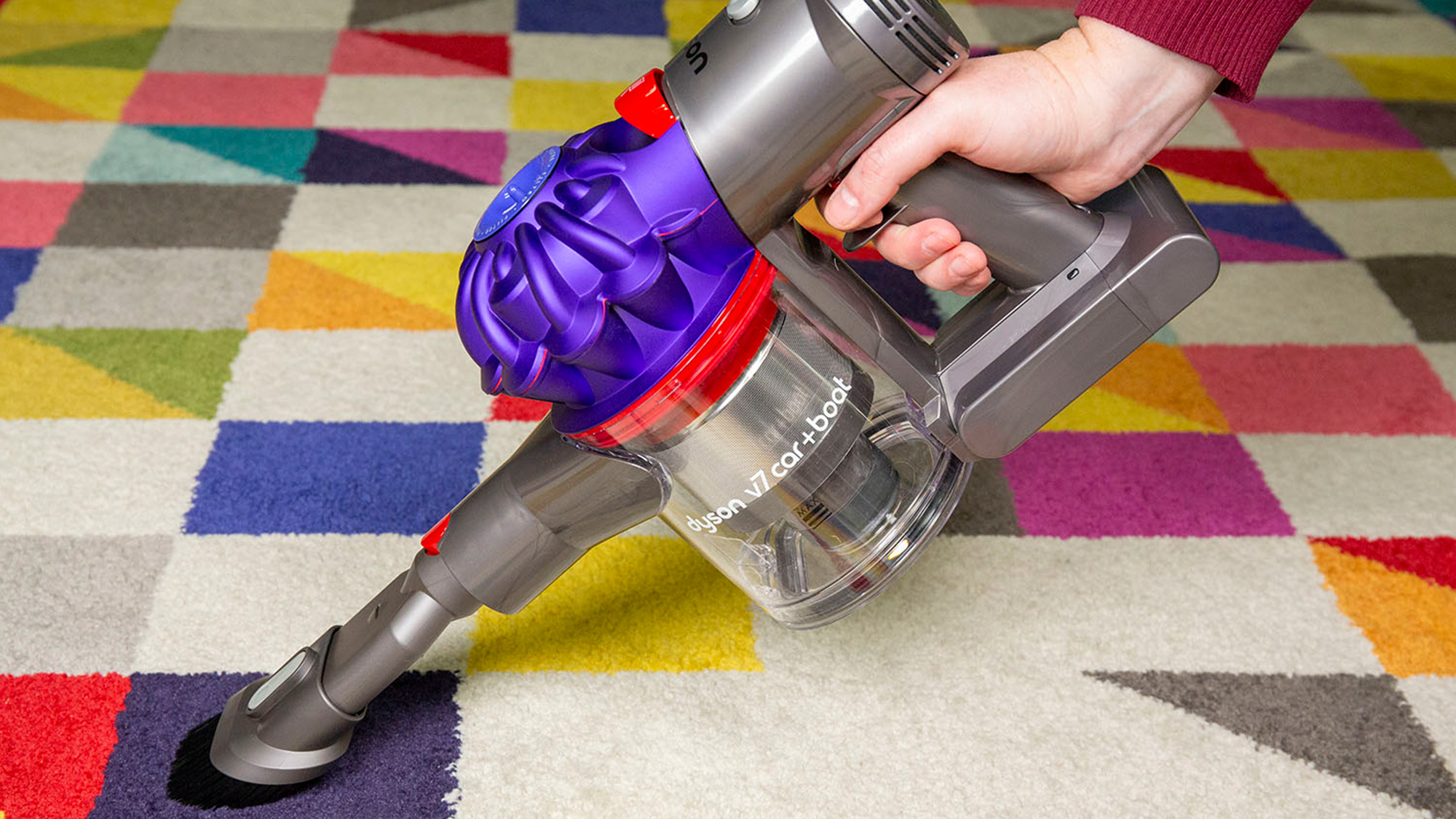
Perhaps one of the biggest selling points I found for the Dyson V11 cordless vacuum was how versatile it was. When I’ve needed to get up high into the corner of a room to remove cobwebs, or head outside to give the inside of my car a clean, I could do it all with the Dyson. All I had to do was remove the hose and click on whichever attachment I needed to transform it into a handheld.
In the past, I would either have to use a long-handled broom to sweep cobwebs away or, in the case of the car, find an extension cable to run the power out to the vacuum cleaner from my house. It’s true that you can buy a dedicated handheld vacuum for these use cases, but that would just take up more storage space. By switching to a cordless vacuum (which supplies more power than a dedicated handheld anyway) I’ve got one device that can serve as effectively as two.
1 thing I didn't like
The dust canister is tiny
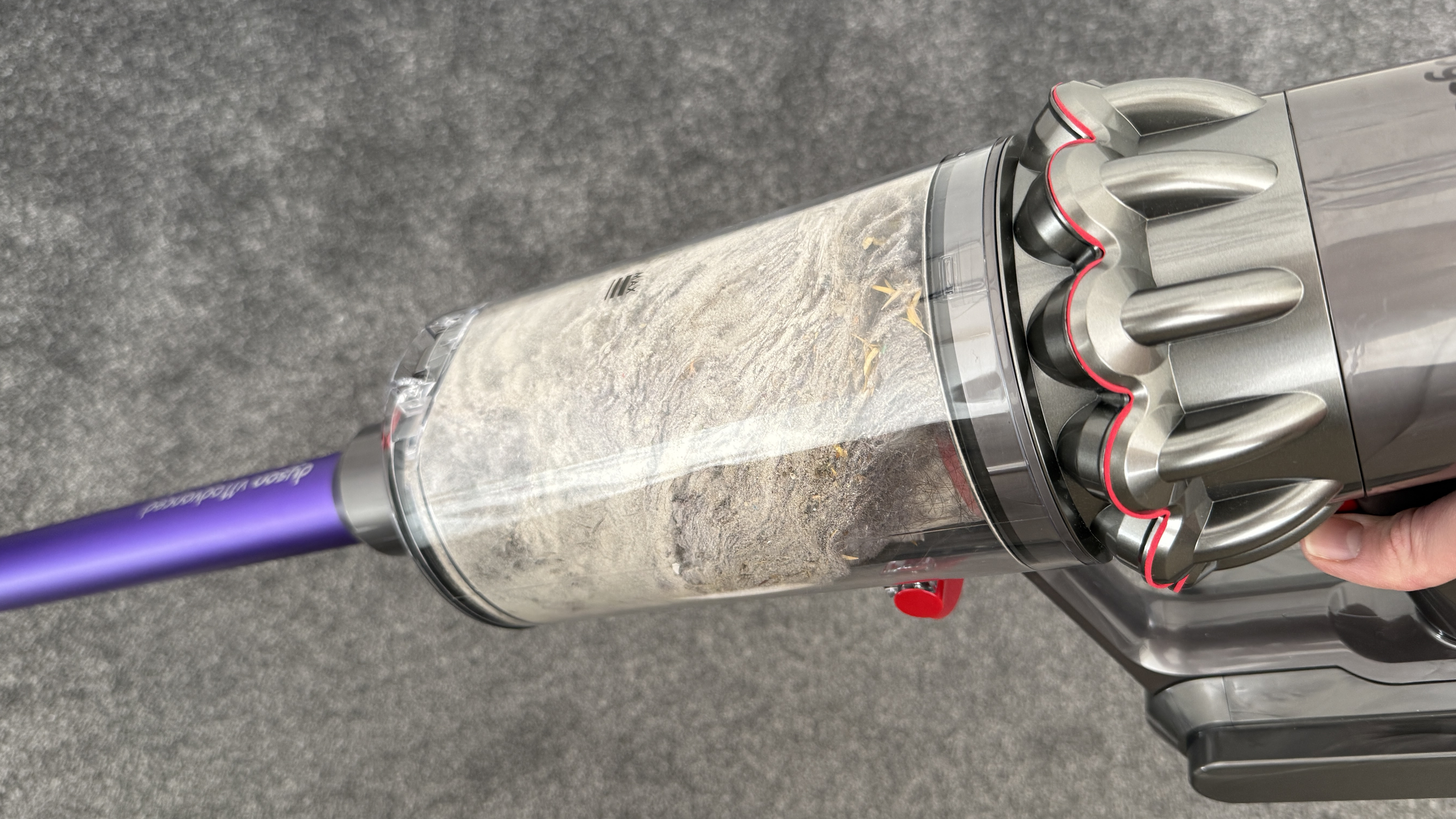
The main trade-off you’re going to have to make when switching to a cordless vacuum like the Dyson V11 (besides the price, in some cases) is the dust canister is going to be much smaller than what you’ll find on a typical upright. That means I had to empty it much more frequently and, in some cases, I had to break off mid-clean to empty the canister before I could continue.
While a few premium cordless vacuum cleaners come with self-emptying charging bases (like on the best robot vacuum cleaners) the one I’ve been using doesn’t offer that feature. In the case of the Dyson V11, I’m working with 760ml / 0.2 gallons of capacity and I understand there’s no way out of this predicament. The larger the dust canister, the heavier the device and the more drain on battery power — so it’s something I’ll have to make peace with.
If there’s a silver lining, it’s that the mechanism for opening the canister and dumping the contents is extremely simple. All you need to do is throw the lever forward to open the end and pull it back once you’ve got rid of the debris. It’s like racking a pump-action shotgun after firing, and it's incredibly satisfying.







